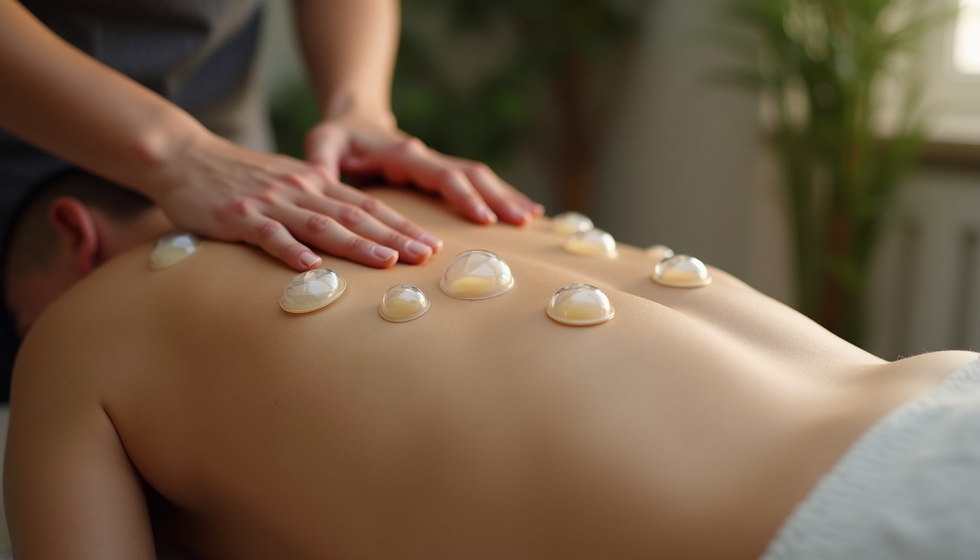Top 15 Facts About Craniosacral Therapy
- Shannon Basco

- Aug 7, 2024
- 3 min read
Updated: Nov 25, 2024
Table of Contents
Craniosacral is a unique treatment. For those in the know, finding a practitioner is a rare and wonderful thing! If you're not sure what this treatment entails and who might need it (though with its stress reduction benefits I think EVERYONE does) check out these facts!
Top Ten Facts About Craniosacral Therapy (CST)
Definition: Craniosacral Therapy is a gentle, hands-on method of evaluating and enhancing the functioning of the craniosacral system, which consists of the membranes and cerebrospinal fluid that surround and protect the brain and spinal cord.
Origins: CST was developed by Dr. John Upledger in the 1970s, based on earlier work by Dr. William Sutherland. Upledger's research and clinical experience led to the formalization of CST as a therapeutic technique.
Techniques: Practitioners use a soft touch, generally about the weight of a nickel, to release restrictions in the craniosacral system. This can improve the functioning of the central nervous system.
Applications:
Headaches and Migraines: CST is often used to relieve tension headaches and migraines by addressing imbalances in the craniosacral system.
Chronic Neck and Back Pain: By releasing restrictions in the spinal cord, CST can alleviate chronic neck and back pain.
Stress and Tension-related Disorders: CST helps in reducing stress and tension, promoting relaxation and overall well-being.
Chronic Fatigue Syndrome: It can help reduce symptoms of chronic fatigue by enhancing the flow of cerebrospinal fluid and improving central nervous system function.
Fibromyalgia: CST may reduce pain and improve sleep quality for individuals with fibromyalgia.
TMJ Syndrome: CST can help alleviate the symptoms of temporomandibular joint syndrome by addressing tension and imbalances in the jaw and surrounding areas.
Post-Traumatic Stress Disorder (PTSD): CST has been used to help those with PTSD by promoting relaxation and releasing physical and emotional tension.
Benefits: The advantages of CST include reduced pain, improved sleep, enhanced immune system function, decreased stress, and better overall health and well-being.
Session Experience: During a CST session, clients typically lie fully clothed on a treatment table. The practitioner gently palpates areas of the body, often starting at the skull and working down to the sacrum.
Safety: CST is considered a safe and non-invasive therapy. However, it should be performed by trained and certified practitioners. It's important to discuss any health concerns with a healthcare provider before starting CST.
Suitability: CST can be beneficial for people of all ages, from newborns to the elderly. It can be used as a preventive measure or to address specific health issues.
Holistic Approach: CST is based on the belief that the body has its own healing capabilities. The therapy aims to support and enhance the body's natural healing processes by releasing restrictions in the craniosacral system.
Contraindications: While generally safe, CST is not recommended for certain conditions, including:
Recent Head Trauma: Individuals with recent head injuries or fractures should avoid CST until cleared by a healthcare provider.
Severe Bleeding Disorders: Those with conditions that predispose them to bleeding or who are on blood thinners should consult a doctor before undergoing CST.
Aneurysm: People with known aneurysms should avoid CST due to the risk of increased pressure on the vascular system.
Acute Infections: CST is not recommended for individuals with acute infections until the infection has resolved.
This treatment is seriously one of my absolute favorites. As a person who suffers from migraines and neck pain it is one of the most effective ways to combat both in a very gentle way. Try it out, and reach out if you have any further questions.
Come see us in our Naperville office and try cranial sacral work today.





Comments